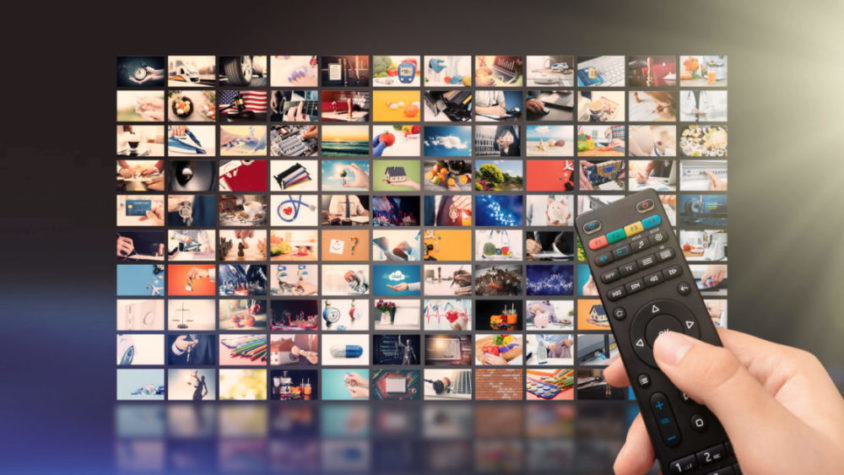Connections

M&E Journal: The Audience is King
Story Highlights
The competition for subscription and ad-supported streaming viewers has never been more intense and looks to remain so for the foreseeable future.
Netflix and Amazon are facing increased competition in the marketplace from the fast-growing Disney+ and its recently launched Star adult-centric offering, as well as from Warner Media’s HBO Max, Comcast’s Peacock, Apple TV+ and Viacom’s Paramount+.
A global presence in both penetration and programming are seen as revenue drivers in the streaming space and Netflix, Amazon, Disney, Warner Media and Apple have recently made big commitments to local language productions as part of their upcoming slates of original programming.
Retaining subscribers who have so much choice is a challenge facing all streaming platforms.
A survey published by Deloitte earlier this year found that 46 percent of respondents who subscribed to streaming services had cut at least one in the prior six months.
To be globally competitive means that in addition to being affordable, providers must serve up a broad array of programming unavailable anywhere else.
This kind of demand for content has created a new market for acquiring global rights to entire film and TV catalogs and libraries, as well as increased spending to develop original, local language productions that will perform well across multiple territories.
A recent cursory look at one major streaming platform revealed that nearly half the content on its U.S. site is non-English. As the fight for subscribers grows with each passing month and new services are either launched or expand-ed into more territories and languages, the quest for a quality globalized viewing experience will be a primary differentiator for consumers.
 THE FUTURE STATE
THE FUTURE STATE
The power of technology has increased exponentially, and is more accessible than ever thanks to cloud computing and rapid advances in artificial intelligence and machine learning platforms.
New machine translation, automatic speech recognition (speech to text) and native language processors are becoming more integrated into globalization service and distribution platforms. All are inevitably part of the future of localization and there are undeniably exciting innovations on the horizon.
In addition to leveraging technology to help create localized content, algorithms derived from consumer behavior will be used, instead of baked-in settings to determine if a viewer prefers content in one language dubbed vs. subtitled for another, making determinations from data based on location, gender, and age and viewing history.
Additionally, audio technology is advancing so quickly that we’re already seeing initial attempts to replicate an actor’s voice from his or her native tongue into any language needed.
With additional development, visual effects augmentation for lip movement will reach the point that foreign language versions can be created with such precise lip sync that you won’t even know that it’s a dub.
Naturally the cost to create and distribute dubs with this level of sophistication will be expensive at the outset, but it will be possible at some point in the future.But for all the bleeding-edge technologies, today there are still very real limits to what machines can localize, and major supply chain dynamics that would make the distribution of different video versions that perfectly match foreign language audio incredibly challenging.
For both subtitles and audio dubs we have to get a creatively accurate translation.
There are still significant aspects of language and storytelling that machines just can’t decipher properly. We experience this every day with the inaccuracy of our smartphones and devices when we use voice commands or speech to text. It’s further evident when you use machine translation and find that sometimes even the simplest sentences just don’t come out right.
While machine translation can be a very useful translation aid, and can be particularly helpful for short and simple literal translations, it can’t yet match the nuance and creativity needed for entertainment content. Linear media content is time-constrained, requiring translations to be precisely summarized and contextualized to maintain readability.
When reading subtitles, the viewer needs to be able to read while simultaneously taking in the picture and sound to have a truly immersive experience.
With dubs, the translations also have to be adapted to match the original actor’s lip sync. Creative intent is where it gets really complicated. Literal translations don’t always convey the emotional intent of the content.
Skilled media translators have to consider the meaning and truly re-write lines to ensure that they will resonate with audiences in another language and culture.
Only human intelligence can fully understand how to convey depth of emotion through the twists and turns of colloquialism in storytelling while fitting into the technical constraints of subtitling and dubbing.
 PROVIDING QUALITY AT SCALE
PROVIDING QUALITY AT SCALE
Having a broad menu of available entertainment programming from around the world is wonderful, but only if it’s a satisfying and immersive viewing experience.
Non-U.S. audiences, especially in France, Spain, Italy and Germany, have long accepted dubbing as a way to consume international fare, while other countries tend to prefer subtitles. More and more, whether through a default setting or simply increased exposure and acceptance, US streaming audiences are watching dubbed content — and not always to rave reviews.
An out-of-synch audio dub on a premium content platform gives localization a bad name and viewers a reason to tune out and turn off.
With heightened consumer demand, localization providers are under increased pressure to deliver in more languages and formats in less time. It is not uncommon as new streaming services launch, for companies with robust pipelines to ingest dozens of titles for localization into sixty or more languages.
To deliver top quality and that level of volume requires innovation and scale, along with a globally distributed talent pool who leverage advances in technology in combination with expertise in the nuances of human language.
At Deluxe we believe that providing support and resources that nurture our translator and voice actor community around the world is as important as our commitment to technology and innovation.
Our worldwide footprint, global workforce, and the most sophisticated distribution pipeline in the market provides our customers with the kind of scale and bespoke attention to their content that streaming services need to compete.
As advances in machine translation and AI continue to present opportunities for speedier workflows and potential cost reductions, it will be important to resist choices that could lead to the commoditization of localization services and degradation of quality.
To achieve scale and to honor the creative vision of a project when globalizing content, the use of new technologies must deftly balance budgetary and timeline needs with the audience’s enjoyment and understanding of the intent, context, and connotation being presented by the storyteller, in any language.
* By Chris Reynolds, EVP, GM, Localization, Fulfillment Services, Subtitling Operations, Deluxe
=============================================
Click here to download the complete .PDF version of this article
Click here to download the entire Spring 2021 M&E Journal









